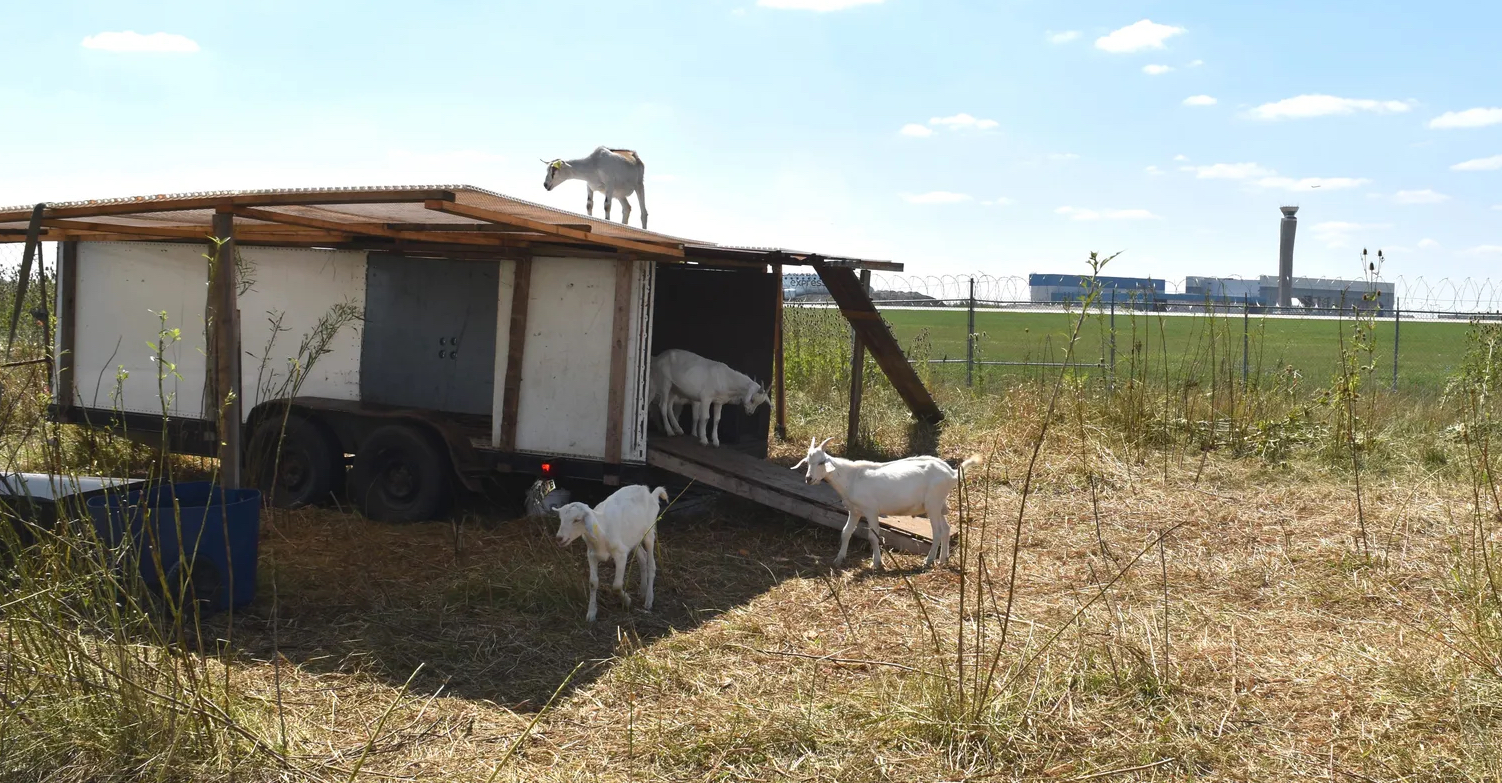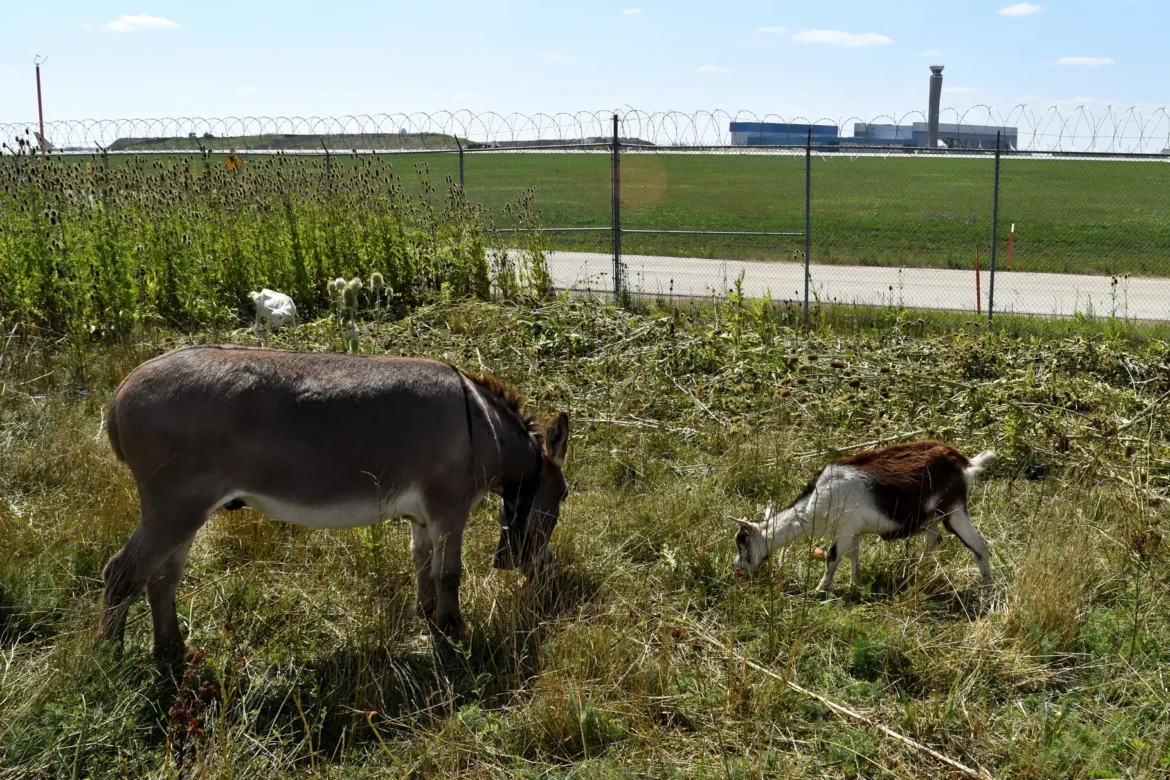Advertiser & Editorial Disclosure: The Bulkhead Seat earns an affiliate commission for anyone approved through the links below. This compensation may impact how and where links appear on this site. We work to provide the best publicly available offers to our readers. We frequently update them, but this site does not include all available offers. Opinions, reviews, analyses & recommendations are the author’s alone, and have not been reviewed, endorsed, or approved by any of these entities.
Don’t worry, they’re not out there today in the crazy snow that’s blowing through Illinois, but I was surprised to learn that Chicago O’Hare International Airport (ORD) has a herd of grazing goats, llamas, donkeys, sheep, and alpacas that help to maintain the landscaping at this busy airport.

The animals are hired from a company called Vegetation Solutions, which is based in Wisconsin. They’re brought out to clear away scrub vegetation and keep the grounds clear on the 11.5 acres of land on the north side of the airfield. Each year they are brought to the airport to work on eating excess plant life and then they’re taken back to Wisconsin for the fall and winter.
O'Hare International Airport's (Chicago) landscaping team consists of 30 grazing animals; goats, sheep, llamas, burros, and alpacas pic.twitter.com/6Q9MyGZrMv
— UberFacts (@UberFacts) January 12, 2024
This program has been going on since 2013 and is part of the Sustainable Vegetation Management initiative, which is the first of its kind at a US airport. While lawnmowers and maintenance crews manage the landscaping that most passengers around the airport, the grazing animals stick to the hilly terrain around Willow-Higgins Creek. The eaten vegetation removes habitats for birds and squirrels (which would not be safe near the airport). It also minimizes the use of toxic chemicals and saves crews from having to clean up debris.
Anthony’s Take: This is so cool. I am going to be on the lookout for the herd this summer. It’s good to hear that the animals don’t mind the noise and this is an environmentally friendly way to keep the grounds clear.
(Image Credits: Chicago Department of Aviation/KP)
User Generated Content Disclosure: The Bulkhead Seat encourages constructive discussions, comments, and questions. Responses are not provided by or commissioned by any bank advertisers. These responses have not been reviewed, approved, or endorsed by the bank advertiser. It is not the responsibility of the bank advertiser to respond to comments.
Advertiser & Editorial Disclosure: The Bulkhead Seat earns an affiliate commission for anyone approved through the links above This compensation may impact how and where links appear on this site. We work to provide the best publicly available offers to our readers. We frequently update them, but this site does not include all available offers. Opinions, reviews, analyses & recommendations are the author’s alone, and have not been reviewed, endorsed, or approved by any of these entities.

1 comment
More locations should use this ecological method of vegetation control. Due to its hilly topography, San Francisco has a local business with a herd of about 100 animals. I first learned of this when walking and saw a goat herd consuming the grass around a water utility facility. https://www.citygrazing.org